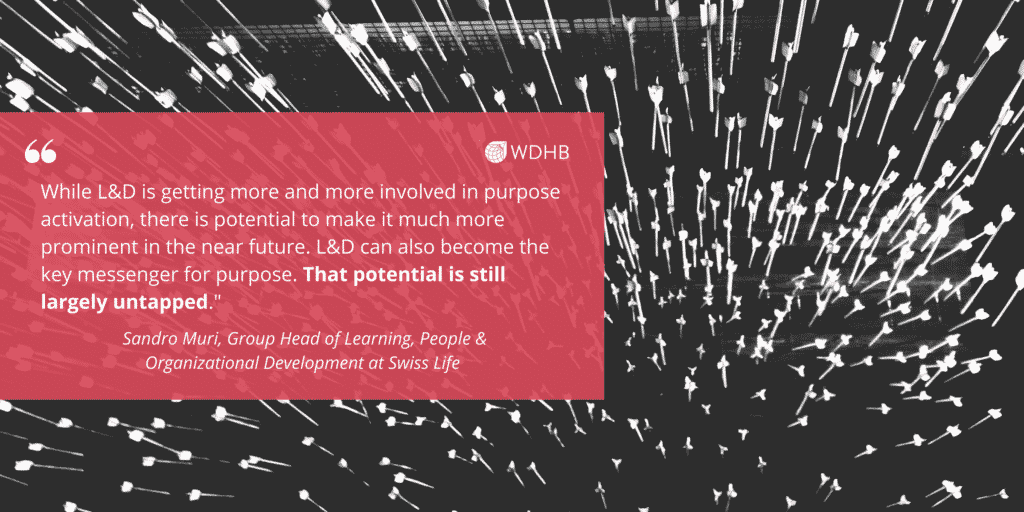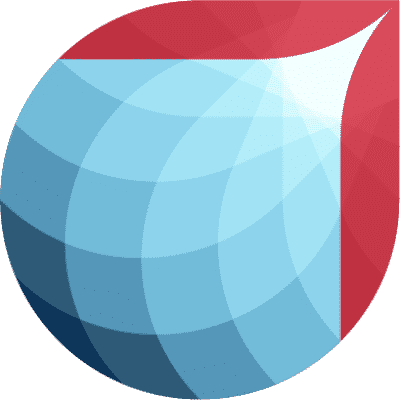How L&D Can Help In Creating A Purpose-Driven Organization

Across the corporate world, purpose has found increased interest, and significant efforts are made to clearly define it within leading organizations. Research and interviews with diverse practitioners for our 2021 L&D Report affirm that purpose can powerfully drive value creation. Granted, purpose is no silver bullet. But it can guide leaders through complexity, and it can bind people together through a sense of belonging. Articulating your organization’s purpose provides your people with a reason for your organization’s ongoing existence, a reason to value what they do, and a reason to contribute to organizational success. Although, this outcome depends largely on leaders doing the work to transform statements of purpose into decision-making and daily practice. At WDHB, we believe that ongoing organizational learning and people development is a big part of that process.
However, our research indicates that organizational learning, leadership development and the L&D function have rarely been central to defining or driving purpose in organizations. There is a real opportunity to tie L&D to purpose, and thus wider value-creation, and to integrate ongoing organizational learning into the pursuit of purpose.
In this article, we will explore these opportunities:
L&D CAN CONTEXTUALIZE ORGANIZATIONAL PURPOSE
Purpose must be contextualized for it to be activated in practice. Purpose, as a “north star,” is a guide to decisions and actions. But action must be appropriate in an organizational and business context. For any organizational purpose to guide decisions and actions, it must be adapted to, or interpreted in, specific contexts, with integrity. Practicing purpose depends on “practical wisdom,” which is primarily learned through actual work.
A key task for L&D is to collaborate with managers and teams to design work in ways that support actively learning purpose in context through meaningful practice. Trevor Kunda, Group Head of Leadership Development & Learning at Discovery, emphasizes this point for fellow L&D leaders: “You [L&D] need the business, because [purpose work] needs to be contextual. I don’t think you can just deliver purpose in isolation. L&D must be connected to the business. The two can’t work independently.”
While purpose can be a unifying virtue, we can’t deny the healthy tensions that exist when there are differing interpretations of the same purpose, or between values that exist within an organization.
A second healthy tension we identified exists between purpose broadly understood and behavior in particular organizational contexts and business situations. Working through this tension offers a situational understanding of organizational purpose that transforms your teams’ mindsets towards a shared, complete vision.
These tensions can and should be cultivated for their ability to facilitate coherence, rather than perfect alignment, complete consensus, or collapse of some perspectives in the face of others. These differing perspectives offer a well-rounded viewpoint of your organizational purpose that would not exist otherwise, while showing the invaluable importance of diversity.
How L&D can make an impact
- Support the contextualization of purpose by building context and culture-aware trainings around purpose rather than cascading top-down messages.
- Work closely with the business (across BUs, functions, or geographies) in designing and developing purpose-related learning programs to make sure that messages resonate well within the specific context at hand.
- Help build clarity around concepts: mission, purpose, vision, and values are sometimes seen as synonyms and people have a hard time navigating them. Hence, the importance of explaining what each of these mean to the organization and how they can be activated through decisions, practices and behaviors.
- “Demystify” purpose: purpose is a big word and can be scary to some. By showing examples of the diversity of ways in which purpose can be appropriated and activated, from the very small and mundane to the big decisions it can influence.
L&D CAN GUIDE EMPLOYEES TO DISCOVER INDIVIDUAL PURPOSE
Clarity of individual purpose can constitute a basis for your team members to find fulfillment in their work and your organization. Clear individual purpose often provides a powerful source of intrinsic motivation and engagement, yielding enhanced performance. This strategy “helps provide language and words describing what they can do to contribute to the organization and/or team, as well as their own satisfaction,” as expressed by Tal Goldhamer. L&D can enable and guide individuals to discover and define their purpose.
Contextualizing purpose must extend beyond building employees’ understandings of organizational purpose to creating environments in which employees willingly connect their own individual goals with the organizational purpose holistically.
We worked with Progressive in our Adaptive Leader Experience to cultivate high-potential leaders within their team. One of the participants recounted, “It has enhanced my bond to the firm and has opened my eyes to ways to improve my performance both in the business and personal life. A very genuine and real approach to talent development, which will pay significant dividends both immediately and into the future.” By working to enhance the presence of individualism and personal vision, team members left this Experience with a shared goal of innovation and impact within their industry [Learn More].
How L&D can make an impact
- Focus on individual purpose: increasingly, L&D is involved in building modules and workshops to cascade and help activate organizational purpose. But it is equally important to develop offerings around individual purpose (in connection with other people’s functions), helping people discover, unveil or articulate their own aspirations.
- Make the case for coherence, not compliance: don’t design programs geared to find a fit between individual and organizational purpose. Instead, accept that learners will find discontinuities and gaps. These enlightening moments of realization are opportunities for strong development that can prove crucial to one’s path. In those cases, support the individual with coaching or direct them to your HR colleagues to discuss implications on their role and place within the organization.
- Leverage your most purpose-driven team members as ambassadors. Because purposeful people are generally proactive learners, they can become drivers of your learning organization. Listening to their ideas and providing them platforms to express their purpose can help create an environment of active learning and change.
L&D CAN CREATE PURPOSEFUL COHERENCE (CONNECTION & MEANING)
Coherence is not simply alignment of [organizational] goals, resources and structures, although that may help. Our definition of coherence is the shared depth of understanding about the nature of the work. In other words, it is fully and only subjective. Interviewed for our report, Dr. Richard Claydon insists that organizations and executives must recognize and value people’s diverse, partial perspectives, and they should encourage multiple connections rather than pursue assimilating people into a single, monolithic culture, or monomaniacal purpose. Human beings are irreducibly multidimensional and complex. Thus, creating coherence should be the aim, rather than a narrow notion of alignment.
The relevance for L&D is two-fold. First, L&D can support alignment by enhancing employees’ ability to play multiple roles coherently, in part by integrating these into a coherent narrative. Second, L&D utilizes storytelling or narrative as a technique to create coherence across individual and organizational purposes. These roles encourage people to make meaningful connections for a deeper understanding of their work, and they foster greater engagement in the workplace.
At WDHB, we worked with Belfius to recalibrate their organizational culture and purpose. Founded in the 1800s, the team left our Learning Expeditions with a recentered focus on tackling organizational goals with a new, shared enthusiasm. To learn more about the power of a collective mindset, read about our transformative work with Belfius.
How L&D can make an impact
- Leverage storytelling to explore the diversity of human purposes, a bridge between the individual and the organization.
- Make it experiential: Build engaging exercises and experiments in which people “play” the part and explore the healthy tensions and challenges of behaving purposefully within the business context.
- Showcase the results: visualizing the outputs of purpose-related programs and sessions helps activate purpose and engage team members. Posters, videos and other media can prove powerful artefacts.
Clearly, L&D can and should have a clearer, more confident voice in conversations about purpose and a stronger role in building purpose in work environments. By fostering a learning environment that makes organizational purpose clear, you and your people will develop the collective capacity to create future value amid complexity.
Download your free copy of the report: https://wdhb.com/research/connecting-purpose/.
Interested in how L&D can play a central role in defining purpose? Let’s connect: https://wdhb.com/contact/.
Author
Subscribe to get Access to Exclusive Content





